Introduction
Save money by replacing just the LCD rather than the whole display assembly.
What you need
-
-
Remove the following 10 screws securing the lower case to the MacBook Pro 13" Unibody:
-
Seven 3 mm Phillips screws.
-
Three 13.5 mm Phillips screws.
-
-
-
Slightly lift the lower case and push it toward the rear of the computer to free the mounting tabs.
In the introduction you should link fixers to this excellent doc: https://www.ifixit.com/Misc/HD_Software_...
It is really critical, super easy, and free(!) to clone your existing drive onto the new one you will install. I ran into one error, but SuperDuper! support replied immediately on how to fix it...Thanks ifixit and SuperDuper! (I ponied up the $28 for the software anyway, I was so impressed!)
Long story short: I drank the AppleKoolAid back in 1984 and have always left the guts of my machines up to Apple - until recently when I needed to swap the SATAs from my original MacDaddy (2009 13" MBPro that I killed in 2018 - coffee + blackout = OOOOPS) into a pristine 2009 MBPro from a Goodwill in North Carolina through eBay. I need the files from iCal and MacMail that can't be opened in my newer machines.
Well . . . I ain't never done nuttin' like that, before!
Enter Luke Miani on YouTube. He raves about you guys! So, I watched everything I could, read your site, bought the right tools and at the ripe old age of 72, I sat down, this morning and did the work. Now my original MacDaddy lives in MacDaddy2.0.
Am I allowed to cry?
Seriously, I can't thank you enough for your bitchen site and killer tools. I wish I'd'a been turned on to this shizzle 30+ years ago.
IFIXIT - IDIGIT!
HAHAHAHAHAHAHAHAHAHA.
That was a brilliant read.
Yes, I came across ifixit a few years ago. Totally helped me out on several occasions.
Glad your Mac repair journey worked out.
:)
Cary B -
-
-
-
Use the flat end of a spudger to lift the battery connector up out of its socket on the logic board.
How do you get that battery connector back on? Do you just press it in back in place after you're done?
yes. I usually plug it in before I screw it down so I can lift the battery a bit and have enough slack to be able to go straight down on the connector, otherwise it comes in on a bit of an angle, which can't be good (though not necessarily bad).
This step almost finished me, and I did extensive damage to the battery plug. Fortunately, I later replaced the battery, and the replacement came with a new plug! :) Newbies need to know - 1. The battery plug is like a thin lip on a thicker lip, so you need to pry BETWEEN 2 thin lips to get it off, else you are trying to yank out the socket. 2. Mine was initially VERY tight, and trying to get it out broke the plastic on all sides of plug, even though I was as careful as possible. Luckily, this didn't hurt functionality and I later replaced the battery. AFTER disconnecting once, it was never so tight again,
-
-
-
Use the flat end of a spudger to pry the subwoofer/right speaker cable connector up off its socket on the logic board.
Please Be Carefully With This Step, Because I Had To Resolder It Back To The Logic Board. But There Is A Black Foam Piece Over The Cable You Have To Pry Up, Lift The Foam Piece And Then Try To CAREFULLY Pry Cable Connector
-
-
-
Disconnect the camera cable by sliding it horizontally out of its socket.
-
If you see a small plastic retainer stuck to the logic board that prevents the camera cable from sliding out, peel it up carefully from the logic board. Apply a little heat from a hair dryer or heat gun if necessary to help soften the adhesive holding it in place. Do not attempt to forcibly disconnect the cable with the retainer in place.
-
If you still have trouble, use the point of a spudger to push at each side of the connector and "walk" it slowly from its socket.
This step is unnecessarily tricky. I’ve tried to make it better by adding images highlighting the plastic stopper thingy and showing a clear arrow of the direction the cable should be pulled.
However, simply pulling the cable may not be enough to remove it. It sure wasn’t for me. I think there ought to be a close-up of the two little nubbins on the sides of the plug which one uses to wiggle it loose from the connector by gently prying with a tiny flathead screwdriver. I didn’t add that tip because (a) it would have made the instructions longer, (b) I didn’t think to take a photo of it, and (c) using a screwdriver carelessly next to the logic board could scratch or break components on the motherboard. A guitar pick or very small spudger might work.
@hackerb9 Thanks for your edits and comments! I took some additional shots and tried to clean this up a little for everyone. There should be a lot less confusion now. Interestingly, neither of the two MacBook Pros used for these guides had the plastic retainer piece you folks mentioned, but I left that image in a link so everyone can still see what it looks like if needed.
Thanks for incorporating some of my edits and for taking new photos.
Are you the one who took the original photographs? If so, you did originally have the hard plastic retainer as it was in those photos, just obscured by your thumbnail. The glue on the retainer allows it to shift a bit, so it's possible you took out the cable and knocked off the retainer without noticing it.
Your two frame animation of pulling out the plug is helpful to show the proper direction. Given the number of people who have destroyed their MacBooks from this procedure, I think we should do even better. The instruction would be clearer if it said, “Disconnect the camera cable by sliding it horizontally out of its socket.”
Also, if you can post a link to a picture without fingers in the shot, I will add an arrow showing the proper direction. (I would have added it to the original, but visually it would have gone through your fingers.)
P.s. this isn't as important, but where did you hear the tip about the hairdryer? I'd leave that out as firmly peeling it up works fine.
hackerb9 -
Negative, I’m not the original photographer. You’re right, I do see the retainer in some of the previous photos, although it wasn’t in any of the images for this particular step. May have been an oversight on the part of the original author! So I’m glad you caught it. I updated the verbiage as you requested. Don’t worry about adding arrows—at this point, if someone ignores both the images and the multiple warnings in the text, that’s no longer a fault with the guide. The heat/hairdryer tip is standard practice for anything that’s secured with adhesive—I hardly ever work on a MacBook of any vintage without using a heat gun at least a couple times. It may not be strictly necessary, but the result is much cleaner and it reduces the risk of accident.
-
-
-
Grab the plastic pull tab secured to the display data cable lock and rotate it toward the DC-in side of the computer.
-
Pull the display data cable connector straight away from its socket.
Well, my display ended up looking like this after the repair:
http://i1106.photobucket.com/albums/h366...
As you can see, there was a light/dark banded pattern along the bottom of the screen, corresponding to the LCD's backlight. In my case it was also accompanied by a constant high pitched whistling noise. I swear to anything that's holy, it was not coming from the fan or the speaker, but rather the motherboard itself.
Anyway, both these problems went away when I disconnected and reconnected the connector at this stage. I'm saying this on the off chance it helps someone else.
It's not to clear but there is a piece of spring steel that rotates away from the main (circuit board side) of the connector....this piece sort of hugs the parameter of the screen cable locking it to the circuit board...both arms wrapped around your brother....looking closely (10x magnifier) at this cable one of the gold connections is slightly oxidized---my display arbitrarily flickers and this symptom is lessened as the temperature increases...I suspect this is the cuase of the screen flashing on/off
-
-
-
Use your Torx driver to remove the two outer 6.5 mm screws securing each of the two display brackets to the upper case (4 screws total).
Hey folks, regarding the screw/driver sizes: there are separate guides for the Mid 2010 model with the T8 screws. Always use the correct guide for your model to avoid confusion, stripped screws, etc. Hope this helps!
-
-
-
-
Remove the last remaining 6 mm Torx screw securing the display to the upper case.
Removing the screen assembly this way, with the computer standing on edge, is needlessly risky and difficult. By the 5th or 6th time I did this procedure (of perhaps a hundred), it dawned on me that there’s a way, way easier method for the whole lid removal job: 1. After removing the bottom cover and disconnecting power, hang the open laptop, keyboard down, facing away, over the edge of your work table with the lid assembly hanging down, monitor facing toward the table and pushed against the table edge. (If you’re klutzy, tape the main body to the table so it can’t slide around.) 2. With the unit positioned this way, you can easily disconnect the various cables & remove the 6 hinge screws. Now the lid assembly will just be hanging, easy to lift away from the main body without difficulty or danger. 3. Reverse this to put it back together.
Nice tip, Clinton! I’ll have to try that next time. Do you have photos of how it is done so this guide can be updated?
hackerb9 -
-
-
-
Lift the display up and away from the upper case, minding any brackets or cables that may get caught.
May be in the wrong place but then please direct me. At this step, can I just take off the upper half (meaning the screen, LCD, and top housing shell in one) and simply replace it with another upper half of the same edition???
Yes, you can. Thanks what I'm doing now. :)
-
-
-
With the heat gun set to low, start by heating the outer black border near the upper right corner of the glass panel.
With a lot of heating, for me, it was very hard to get the glass to separate from the case. I had better luck starting from the bottom right as I could grip better onto the case. Three mistakes I made:
1. Once I got the glass separated, I probably didn't heat sufficiently as I was going around and the glass broke. That made the rest of the procedure miserable. Lesson: pull very gently.
2. I must have touched one of the tiny bits of glass that fell on the LCD and it scratched the actual screen. :-(. Lesson: vacuum the pieces as you go and be very careful when touching the LCD.
3. I somehow overheated the LCD screen at the top left and right corners and now the display is all wonky and faded at the corners. Not sure what the lesson is here.
First, if using a hair dryer, what setting should that be operated at? It would be much cooler than the heat gun, right?
Second, the iFixit basic set comes with a small, clear suction cup. Would that be sufficient for this project, or does it require the stronger pull of the other cups?
Finally, must I reapply adhesive to the case when replacing the glass? Does the original remain tacky and re-bond on assembly?
It's been a while since you asked, but since no one answered and someone else may have the same questions:
Hair dryers vary a lot, depending on wattage. I would start on low or med, and work my way up to high if necessary. I'd keep the fan on the lowest setting.
The little suction cup is for removing screens like the iMac, which just uses magnets, and possibly an iPad or iPhone. I would not want to use that for this project, get something about 2" wide with a decent handle.
The screen should have the double sided glue tape already applied, just remove the backing. I wouldn't get glass that doesn't have the tape on it, big waste of time with little savings in cost.
Jeff Kamis
All I can say for this is don't be tempted to hold the heat gun too close. I ended up burning my LCD the first time I did it and having to replace that when all I was looking to do was replace the cable. I got the glass off holding it about 4/5 inches from the screen and being patient (it took about 5/10 minutes in the end).
The tape is very sticky and the glass is very fragile but at the same time fairly flexible.....I ended up breaking the glass ans it turned out to be a mess picking up the shards....but in the end a new glass is not too costly. the implication is that heating melts the glue but it is really just double stick tape.....there are some "youtube" videos that are worth a look but I would suggest using guitar picks and not a putty knife which creates a point load that breaks the glass....wear safety glasses!!
Be ready to replace the glass (good thing mine was already broken, I ordered one). Wear surgery gloves and protective glasses. Trust your nose, if it smell melted plastic, it’s a good clue to stop the heat.
If you have a glass cover that is severely cracked then the heating gun and suction cup procedure really doesn’t work. Suction cups won’t hold and the already broken glass doesn’t lift. Here’s what I did that made the job easier. Using 2 inch wide transparent packing tape I laid it along the perimeter of the display but not covering the rubber edge. Then I used a 1/4 inch wood carving tool and very carefully removed the glass and 2 sided tape around the metal border. Use as your guide picture 2 in this step that shows where the camera and cable is located. Where the camera is located in the top center the 2 sided tape isn’t located so you can easily lift the glass. The camera cable runs up the right side in a trough in the metal border so when lifting the tape and glass in this area just keep the sharp end flat and it is wide enough it won’t dip into the trough and damage the cable. The tape was very helpful because it kept the glass from splintering and going everywhere.
-
-
-
Gently lift the corner of the display glass enough to insert a spudger between it and the display assembly.
-
Use the flat end of a spudger to gently pry up the adhesive securing the front glass to the display.
-
Pry up the glass panel a few inches away from the upper right corner along the top and right edges of the display.
-
-
-
Use a heat gun to soften the adhesive under the black strip along the right side of the front glass panel.
-
Attach a suction cup along the right side of the front glass panel.
-
Pull up on the glass panel while you use the flat end of a spudger to separate it from the rest of the display assembly.
-
Continue working along the right edge of the front display glass until it is separated from the display.
I ended up breaking my glass panel due to using the spudger. I think if you use something more like a small putty knife you will do better. The spudger puts a lot of pressure in a small spot while the putty knife would put a little pressure over a larger area. Also, if you do break the glass, be sure to get ALL of the broken bits off before putting the new one on. Also, watch out for those broken bits as they tend to penetrate skin quite easily, and stay there for days!
-
-
-
Use your heat gun to soften the adhesive under the black strip along the top edge of the glass display panel.
-
Attach a suction cup near the top edge of the glass display panel and use it to pull the glass panel up off the display.
-
Work along the top edge of the glass panel, carefully using the flat end of a spudger to separate the adhesive if necessary.
-
-
-
Use a heat gun to soften the adhesive under the black strip near the upper left corner of the glass display panel.
-
Attach a suction cup near the upper left corner of the glass display panel.
-
Pull up on the suction cup and use the flat end of a spudger to carefully pry the glass display panel out of the display assembly.
-
-
-
Use a heat gun or hair dryer to soften the adhesive under the black strip along the left side of the front glass panel.
-
Attach a suction cup along the left side of the front glass panel.
-
Pull up on the glass panel while you use the flat end of a spudger to separate it from the rest of the display assembly.
-
Continue working along the left edge of the front display glass until it is separated from the display.
-
-
-
Insert the edge of a plastic opening tool between the display glass and the camera bracket, and run it around the camera bracket to separate it from the display glass.
-
-
-
To reconnect the cable, first use the tip of a spudger to remove the piece of foam tape over the camera cable ZIF socket.
-
Use the tip of a spudger to flip up the ZIF cable retainer on the camera cable socket.
-
Insert the camera cable into its socket on the camera board and use the tip of a spudger to snap down the ZIF cable retainer, locking the cable in place.
-
-
-
Slide the clutch cover toward the right edge of the display.
-
-
-
Starting at its far right end, rock the clutch cover along its long axis while pulling it away from the clutch hinge.
-
Working from right to left, carefully continue to release and lift the clutch along the lower edge of the display assembly.
-
Lift the clutch cover up off the front bezel and set it aside.
Highly recommended to remove clutch cover BEFORE heating up glass, because cover is made of very thin plastic and it'll be deformed!
Basically, I'm removing everything from screen - clutch cover, wifi card, antenna, all plastic bits, and only then proceed with heating and glass removal.
-
-
-
De-route the display data cable from its retaining bracket near the lower left edge of the display.
-
To reassemble your device, follow these instructions in reverse order.
To reassemble your device, follow these instructions in reverse order.
Cancel: I did not complete this guide.
116 other people completed this guide.
6 Comments
When I removed the glass, the adhesive pulled up the camera left side gold ribbon cable. I removed the screw securing the small circuit board to the left of the camera and flipped it over. There's a tiny connector there. I had to pull back the gold tape (on the ribbon cable) and carefully feed the end of the gold mylar ribbon cable into the connector. The gold tape then falls over the top of the connector and would normally hold it place if it hadn't lost it's adhesive.
As the glass may be broken on these, I found that putting Duct tape across the broken screen helped keep it together better for easier removal. Also you might want to watch the small suction cup that comes in the kit as the metal pull ring melts right out, I had to use my bigger suction cups.
consider removing clutch plate before heating, it will melt if your not careful
Suggest asking if they purchased a refurbished model. My last client's glass was held on with 30lb 3M shelf tape. No amount of heat or alcohol would remove it. Thank goodness the glass was already broken. I had to work for 2 hours to remove all of the glass, and old adhesive is not wanting to come off with elbow grease and alcohol. Going to try using tiny, careful amounts of goo-gone. Don't want anyone else to ever have to deal with this on future repairs (Client is a traveler, and accident prone)
Hi I am looking to just replace the lvds cable how do i do it.. Do i need to take glass off of screen?
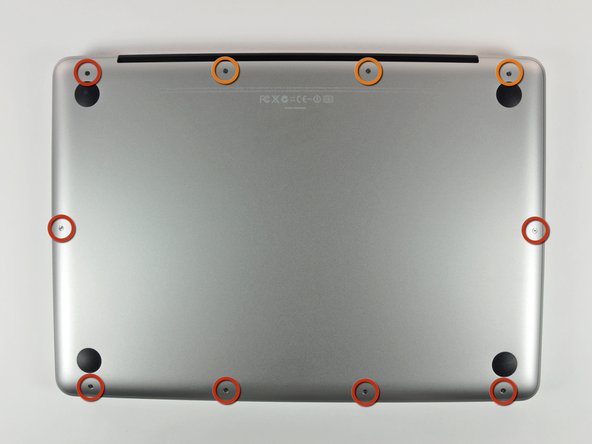








































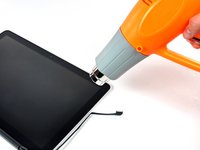
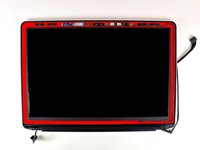




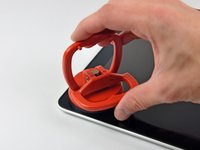
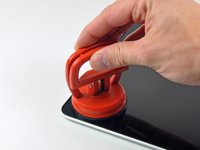
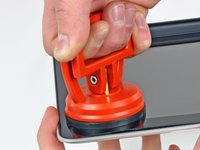



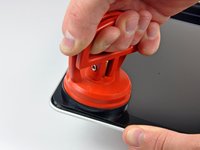
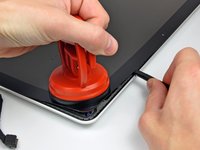
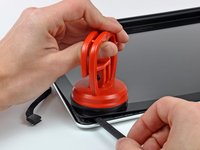


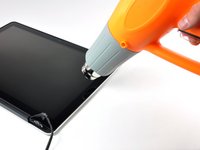
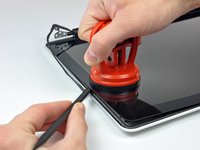


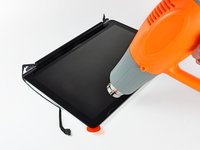
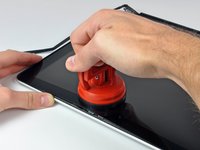


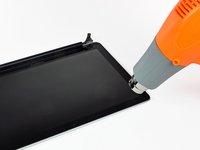
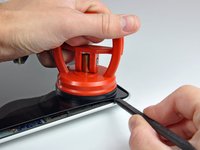


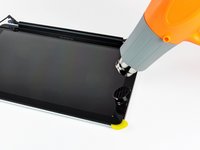
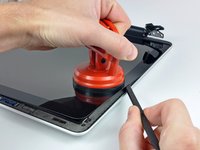


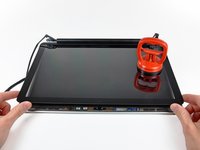
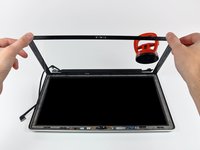


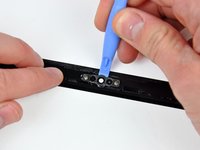
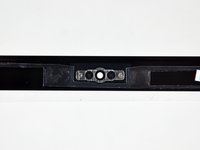



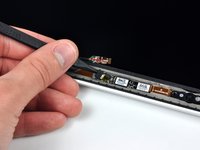
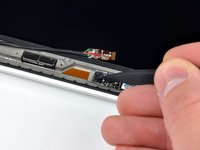
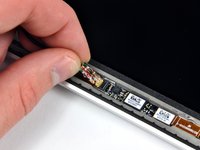

















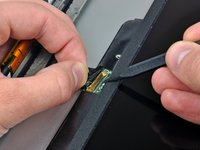
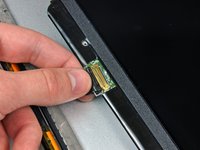

Compare the short screws carefully before reinstalling them. The shouldered screws go in the holes on the front edge.
David Kilbridge - Reply
Before I started removing any screws I took a piece of paper and drew the bottom of the laptop and put a piece of double-sided tape in the spot where each screw goes. That way when I took out the screws, I could put them on the tape so I knew exactly which screw went in which spot. I did the same thing for dismantling the inside on another sheet of paper, then a third sheet for the screen after getting the front glass off.
mastover - Reply
I use a similar technique: I print out the iFixit manual for the job, and Scotch-tape down the screws/brackets/cables I remove at each step next to the component descriptions. That way, when I'm reassembling, the bits are taped right next to the photo of where they came from.
adlerpe -
That's exactly what I do for all my repairs! It's the best way to keep track of all of the parts ' original location and to make sure that you don't miss any parts during reassembly.
joyitsjennie -
Great idea and one I use often
Thomas Overstreet -
Excellent idea! Thanks for sharing it here.
Laura Sharkey -
I used a 00 that fit but the screws were very tight so I used a tiny paintbrush with some wd40 on it and put it around the edges of the screws. Worked like a charm
valentinedhdh - Reply
I use a magnetic mat and place the screws in order on that :)
Cary B - Reply
How to tell all screws apart?
Spudgeboy - Reply